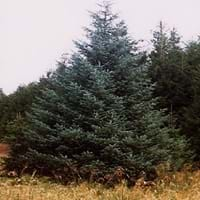Life Span
Perennial
Perennial
Type
Flowering Plants
Tree
Origin
Asia, Europe
Eastern Asia
Types
American Lily of the Valley, European Lily of the Valley, Japanese Lily of the valley.
Black Spruce, Norway Spruce, Colorodo Spruce
Habitat
Banks, Broad-Leaved Forests, coppices, Dry and Young forest Heaths, Forest margins, Ridges, Rocky Ridges
By seashore, Humid climates, Temperate Regions
USDA Hardiness Zone
4-8
6-8
Sunset Zone
A1, A2, A3, H1, H2, 1a, 1b, 2a, 2b, 3a, 3b, 4, 5, 6, 7, 14, 15, 16, 17, 18, 19, 20
A3, 2a, 2b, 3a, 3b, 4, 5, 6, 7, 8, 9, 10, 12, 14, 15, 16, 17, 18, 19, 20, 21, 22, 23, 24
Habit
Mat-forming
Oval or Rounded
Flower Color
Pink, White
Red
Flower Color Modifier
Not Available
Bicolor
Fruit Color
Not Available
Red, Green
Leaf Color in Spring
Dark Green
Green, Light Green
Leaf Color in Summer
Dark Green, Green
Green
Leaf Color in Fall
Green, Yellow green
Red, Crimson
Leaf Color in Winter
Not Available
Not Available
Leaf Shape
Bell Shaped
Acicular
Plant Season
Fall, Spring, Summer
Spring, Summer, Fall, Winter
Sunlight
Part sun, Partial shade
Full Sun, Partial Sun, Partial shade
Type of Soil
Moist, Well drained
Clay, Loam, Sand
The pH of Soil
Acidic, Neutral
Acidic, Neutral
Soil Drainage
Not Available
Average
Bloom Time
Late Spring, Spring
Early Spring, Spring, Late Spring, Early Summer
Tolerances
Not Available
Heat Tolerance, Humidity, Light Frost
Where to Plant?
Container, Ground, Pot
Ground
How to Plant?
From Rhizomes, Seedlings
Seedlings, Spores
Plant Maintenance
Medium
Medium
Watering Requirements
Keep the ground moist but not water-logged, Requires a lot of watering, Water twice a day in the initial period, Water when soil is dry
Needs less watering
In Summer
Lots of watering
Lots of watering
In Spring
Moderate
Moderate
In Winter
Average Water
Average Water
Soil pH
Acidic, Neutral
Acidic, Neutral
Soil Type
Moist, Well drained
Clay, Loam, Sand
Soil Drainage Capacity
Not Available
Average
Sun Exposure
Part sun, Partial shade
Full Sun, Partial Sun, Partial shade
Pruning
Do not prune during shooting season, Prune after harvesting, Prune in late summer or fall, Prune to stimulate growth, Remove deadheads
Prune when young, Remove dead branches
Fertilizers
All-Purpose Liquid Fertilizer
slow-release fertilizers
Pests and Diseases
Anthracnose, Aureobasidium leaf spot, Foliar nematode, Leaf spot, Mealybugs, Rust, Southern blight
Aphids, Birds, Snails
Plant Tolerance
Drought
Heat Tolerance, Humidity, Light Frost
Flowers
Yes
Insignificant
Flower Petal Number
Not Available
Single
Edible Fruit
Not Available
No
Fragrant Fruit
Not Available
No
Fragrant Leaf
Not Available
No
Foliage Texture
Coarse
Fine
Foliage Sheen
Not Available
Matte
Self-Sowing
Not Available
No
Attracts
Bees
Ants, Fruit Bats, Snails, Squirrels
Allergy
Headache, Nausea, Vomiting
Constipation, Diarrhea, Dizziness, Sore eyes
Aesthetic Uses
Beautification, Showy Purposes
Showy Purposes
Beauty Benefits
Not Available
For treating wrinkles, Making cosmetics, Speed hair growth
Edible Uses
Yes
Sometimes
Environmental Uses
Air purification
Agroforestry, Air purification, Nesting sites for birds, soil stabilisation
Medicinal Uses
Chest pain, Swelling
anti-inflammatory, Back pain, Emollient, Immunity, Obesity
Part of Plant Used
Flowers, Leaves, Root
Leaf Stalks, Root
Other Uses
Air freshner, Cosmetics, Oil is used for aromatherapy, Oil is used in perfume, soaps, creams, etc., Showy Purposes, Used As Food, Used as Ornamental plant, Used for fragrance
Constructing Boats, Making piano frames, Used as fuel, Used in Furniture, Used in making musical instruments, Used in paper industry, Used in pencil industry
Used As Indoor Plant
Yes
No
Used As Outdoor Plant
Yes
Yes
Garden Design
Bedding Plant, Bog Garden, Cutflower, Edging, Foundation, Mixed Border
Container, Feature Plant, Mixed Border, Topiary / Bonsai / Espalier
Botanical Name
Convallaria majalis
ACER palmatum 'Osakazuki'
Common Name
Lily of the Valley
Japanese Maple, Osakasuki Japanese Maple
In German
Maiglöckchen
Fichten
In French
Lily of the Valley
Picea
In Spanish
Lirio de los valles
Picea
In Greek
Κρίνος της κοιλάδας
Spruce
In Portuguese
Lírio do Vale
Picea
In Polish
Lilia doliny
Świerk
In Latin
Lílium convállium
Picea
Phylum
Tracheophyta
Pinophyta
Class
Magnoliopsida
Pinopsida
Order
Asparagales
Pinales
Family
Asparagaceae
Aceraceae
Clade
Angiosperms, Monocots
Not Available
Tribe
Not Available
Not Available
Subfamily
Nolinoideae
Piceoideae
Number of Species
Not Available
Importance of Lily of the Valley and Sitka Spruce
Want to have the most appropriate plant for your garden? You might want to know the importance of Lily of the Valley and Sitka Spruce. Basically, these two plants vary in many aspects. Compare Lily of the Valley and Sitka Spruce as they differ in many characteristics such as their life, care, benefits, facts, etc. Every gardener must at least have the slightest clue about the plants he wants to plant in his garden. Compare their benefits, which differ in many ways like facts and uses. The medicinal use of Lily of the Valley is Chest pain and Swelling whereas of Sitka Spruce is anti-inflammatory, Back pain, Emollient, Immunity and Obesity. Lily of the Valley has beauty benefits as follows: Not Available while Sitka Spruce has beauty benefits as follows: Not Available.
Compare Facts of Lily of the Valley vs Sitka Spruce
How to choose the best garden plant for your garden depending upon its facts? Here garden plant comparison will help you to solve this query. Compare the facts of Lily of the Valley vs Sitka Spruce and know which one to choose. As garden plants have benefits and other uses, allergy is also a major drawback of plants for some people. Allergic reactions of Lily of the Valley are Headache, Nausea and Vomiting whereas of Sitka Spruce have Constipation, Diarrhea, Dizziness and Sore eyes respectively. Having a fruit bearing plant in your garden can be a plus point of your garden. Lily of the Valley has showy fruits and Sitka Spruce has no showy fruits. Also Lily of the Valley is flowering and Sitka Spruce is not flowering . You can compare Lily of the Valley and Sitka Spruce facts and facts of other plants too.





